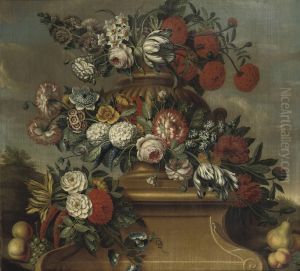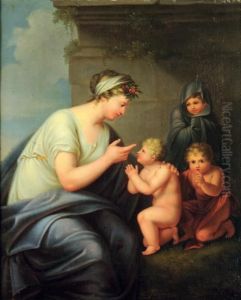Cornelis Lens Paintings
Cornelis Lens was a Flemish painter born on April 22, 1739, in Brussels, which was then part of the Austrian Netherlands. His work primarily falls into the category of Neoclassicism, a movement that looked to classical art and culture for inspiration and which became influential from the mid-18th century onwards. Lens's style was characterized by its clarity, order, and adherence to classical ideals of beauty, which was typical of the neoclassical aesthetic.
Lens received his early training in art from his father, who was also a painter. Later, he became a student of the prominent history painter, Laurent Delvaux, in Nivelles. His education continued under the guidance of Jacob de Wit in Amsterdam, who was well-known for his frescoes and decorative work. Lens's studies with de Wit were particularly influential, helping to hone his skills in composition and his handling of mythological and historical subject matter.
Throughout his career, Cornelis Lens worked on various commissions and produced historical paintings, often with subjects drawn from ancient Greek and Roman history and mythology. He became a respected figure within the artistic community of his time. In 1779, he was appointed as a director of the Academy of Drawing in Brussels, which indicates the level of esteem he had reached as an artist.
Despite the recognition he received during his lifetime, Cornelis Lens is not widely known today, and his work has not been the subject of extensive scholarly attention. However, his paintings remain as examples of the neoclassical style in the Southern Netherlands (present-day Belgium), contributing to the region's rich artistic heritage.
Cornelis Lens died in Brussels on March 28, 1822. His works are part of various European art collections and occasionally appear in art auctions, representing the legacy of the Flemish interpretation of Neoclassicism during the late 18th and early 19th centuries.


